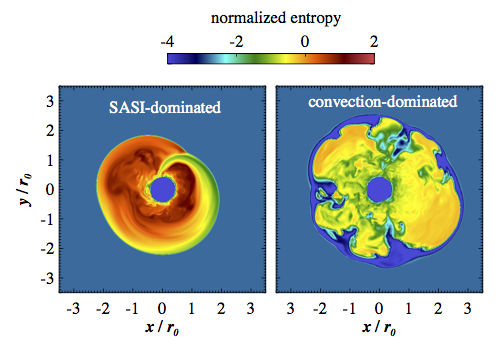Core-collapse supernovae play a fundamental role in the evolution of the Universe. They generate and disperse a significant fraction of the chemical elements, provide important kinetic energy feedback to the interstellar medium, and are the birth places of neutron stars and stellar-mass black holes. The explosion mechanism of core-collapse supernovae remains an unsolved problem in theoretical astrophysics, however. Observational and theoretical evidence suggests that this mechanism is intrinsically asymmetric for most stellar progenitors.
Two hydrodynamic instabilities are capable of breaking spherical symmetry at the onset of explosion. They are (1) neutrino driven convection, and (2) the Standing Accretion Shock Instability (SASI). Each of them can leave a different imprint in the geometry of the explosion. Which one of them dominates depends on structural properties of the progenitor star.

The Figure shows slices of the entropy on the equatorial plane for two 3D parameterized supernova simulations that explode dominated by the SASI (top) or by neutrino-driven convection (bottom).
More information here.